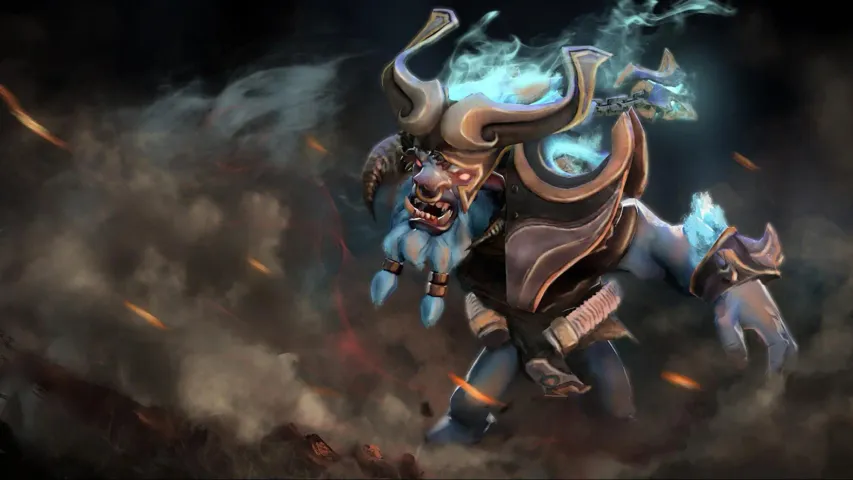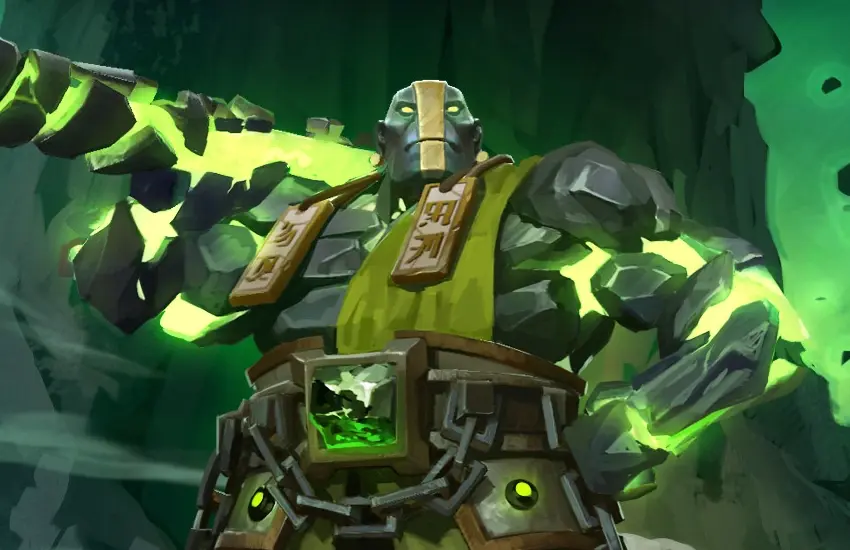
Dota 2 is a complex multiplayer game where each player has a specific role. Roaming in Dota 2 can be one of the most useful aspects and can be extremely beneficial. However, there are instances where it might not be very helpful, especially if you don't know how to utilize it. This guide will show you how to roam effectively in Dota 2, providing you with all the tips and tricks you need to know.
Who Are Roamers and What Do They Do?
Roamers in Dota 2 are heroes who specialize in constantly moving around the map instead of staying in one lane. Their primary goal is to apply pressure on enemies and support their allies in various parts of the map. They often perform unexpected ganks on enemy heroes in different lanes, helping to reduce their effectiveness, forcing them to play cautiously, and creating opportunities for kills. Roamers assist their allies in different lanes by providing control and safety, as well as contributing to the elimination of enemy heroes. This can include placing wards, healing allies, or protecting them from enemy attacks. Roamers also control runes on the map to ensure their availability for allied heroes, especially mid heroes who rely heavily on runes to maintain their effectiveness in battles. They gather information about enemy movements, place wards to provide vision, and destroy enemy wards. This helps the team control the map and anticipate enemy actions. The constant threat of a roaming hero forces enemies to play more cautiously, which can decrease their farming efficiency and lane progression. Roamers need to be mobile, have control abilities (such as stuns or slows), and be effective in the early stages of the game. They should have abilities to quickly move around the map and pose a threat to enemies.
Heroes
One of the first things players need to get accustomed to when deciding to take on the role of a roamer is to learn everything about their hero. We don’t just mean abilities, as players should know the limits of their hero’s capabilities. This might seem easy, but in most cases, it’s not, especially for those who lack experience in this position. Roamers need to be mobile, have control abilities (such as stuns or slows), and be effective in the early stages of the game. The best roamers in Dota 2 include heroes like Earth Spirit, Bounty Hunter, Tusk, Nyx Assassin, and many others who have abilities to quickly move around the map and create a threat to enemies. Generally, any position 4 hero can roam to other lanes when necessary. Another important aspect that everyone should know is the hero's tankiness. Names like Spirit Breaker and Ogre can be much more aggressive and even dive under towers if the situation calls for it. Our favorite pick for you would be Earth Spirit. He is one of the most popular characters in pubs, so there’s a lot of information about his gameplay, which will help you understand not only the character but also the role itself.


How to Gank Properly?
Most often and easiest is to gank mid because there is only one hero, making it much easier to control, especially if they are squishy. Of course, nothing stops you from ganking and applying pressure on the offlane, even if you don’t find kills, you can push opponents back, making life much easier for your carry and giving them the much-needed space. Your main goal should be not to be seen. This means the hero you want to kill shouldn’t see you approaching, and the enemy in your lane shouldn’t report that you are missing. It’s no surprise that this is easier said than done. Improving your stealth skills can take a lot of time. First of all, you should ask or get your position 5 to find out if there are wards nearby. Usually, you will head to the carry’s lane via teleport, so it is extremely important that there are no enemy wards. Know who to focus on. It’s better to discuss with your team in advance who your primary target is.
What Else to Do Besides Ganking?
As mentioned earlier, there are times when you might need to focus on something else if a particular hero becomes more dangerous after reaching a certain level or buying a specific item. In such situations, you focus on placing and destroying wards, helping or taking runes yourself. You need to constantly apply pressure on various lanes, even if there’s no chance for a kill. Opponents should feel the fear of not knowing where you are at a given moment and whether you are waiting for them to initiate a fight.

Key Stages of the Game
Now we’ll discuss what you should be doing at all stages of the game. We’ll delve deeper into everything we’ve discussed above and figure out when to do what.
Early Game
Roamers start their influence from the first minutes of the game. In the early stages, your tasks include:
- Lane Support: Your primary goal is to support your allies in different lanes. You should appear where your allies need help and create opportunities for kills or force enemies to retreat. Use your abilities to stun, slow, or otherwise control enemies to ensure successful ganks. Often, your presence in a lane can force enemy players to play more cautiously, reducing their farming efficiency and giving your allies an advantage.
- Information Gathering: In the early stages, it’s crucial to have good map vision. Place wards in strategic locations to provide vision and track enemy movements. This helps your team avoid unnecessary ganks and plan their attacks more effectively. It’s important to place wards not only on the river but also in the forests and other places where enemies might hide or prepare attacks.
- Rune Control: Runes are an important resource in the early stages of the game, especially for mid heroes. You need to control runes to prevent enemies from using them and help your allies. Ensure your mid hero gets runes, which can significantly boost their effectiveness in the lane. Constantly check rune spawn locations and inform your allies about their appearance. If an enemy tries to take a rune, try to prevent them or even set up an ambush.
In the early game, your activity and mobility are key to creating an advantage for your team. Constantly analyze the situation on the map, communicate with your allies, and adapt your actions based on the circumstances. Your goal is to dominate the early stages and create favorable conditions for your team’s further development.
Mid Game
In the mid game, your actions as a roamer become even more important. By this time, you should have sufficient levels and items to continue effectively influencing the game.
- Increasing Map Control: Continue placing wards in strategic locations to maintain map control and detect enemy movements. Also, don’t forget to destroy enemy wards.
- Roshan Control: Place wards near Roshan and control the area around him. Timely Roshan kills can give your team a significant advantage.
- Pressure on Enemies: Constantly pressure enemies, forcing them to play more cautiously and defend their lanes. This allows your core heroes to farm more efficiently.
In the mid game, your goal is to ensure stability and advantage for your team. You are responsible for increasing map control and managing important objectives like Roshan to secure your team’s success in the later stages of the game.
Late Game
In the late game, the roamer’s role changes but remains crucial. Your goal is to support your team in team fights and maintain map control.
- Initiation: You are responsible for starting team fights. Use your abilities to initiate attacks and control key enemies to allow your allies to deal maximum damage. The ability to choose the right moment to start a fight and target the right enemies can decide the outcome in favor of your team.
- Core Hero Protection: At this stage, your core heroes need your support more than ever. Help them defend against enemy attacks using your abilities and items to reduce damage or get them out of danger. Ensuring the safety of core heroes is one of your most important tasks at this stage.
- Situation Analysis: During team fights, constantly analyze the situation on the battlefield. Be ready to use your abilities at the most crucial moments to turn the tide in favor of your team. Consider the positioning of enemies, the state of your allies, and the opportunity to maximize your impact. Sometimes one correct decision can determine victory or defeat for your team.
In the finish stage, your role is to provide support and control over the battlefield. Your effectiveness will be determined by your ability to initiate accurately, protect core heroes, and analyze the situation during fights.


Analyze Professional Games
Your gameplay depending on the character you choose will differ significantly because each has its strengths and weaknesses. Therefore, we recommend:
Watch streams and matches of professional players. Here you can find a lot of interesting information, such as unique ward placements or how players achieve success during ganks. Streams are great because you can directly ask the player for advice for a situation that specifically concerns you. You will learn the routes that different players take. Also, many players comment on their games, which will be useful for you. The advantage of watching replays of professional matches is that you can see how your character's abilities combine with others and how they remain useful in the late stages of the game. Learn more about analyzing professional matches here.

Conclusion
Roaming in Dota 2 is an extremely important and complex role that requires a high level of strategic thinking, coordination, and game knowledge from the player. An effective roamer can change the course of the game, providing numerous advantages for their team at all stages. From choosing the right hero to constantly pressuring enemies, the roamer performs many critical tasks that can determine the success or failure of the team.
In the early stages of the game, the roamer must actively assist their allies, control runes, and provide vision on the map. This includes timely ward placements, successful ganks, and killing enemy heroes, creating favorable conditions for the team's core heroes.
In the mid-game, the roamer continues to play a key role by controlling the map, providing information about enemy movements, and supporting their allies in important moments. Gathering necessary items and constantly analyzing the situation on the map allow the roamer to remain an effective and influential player.
In the late game, the roamer becomes even more crucial in team fights and objective control. Initiating fights, protecting core heroes, and using abilities at critical moments can change the course of the game. The roamer must also ensure control over key objectives such as Roshan and towers to maintain map advantage and provide safety for their team.
Overall, roaming in Dota 2 requires constant attention to detail, the ability to make quick decisions, and effective team interaction. A successful roamer can provide their team with an advantage that can lead to victory. Understanding the basics of roaming, strategic thinking, and the ability to adapt to changing game conditions will help you become a better roamer and achieve new heights in Dota 2. Good luck on the battlefield!
Comments
Upcoming Top Matches
Latest top articles







No comments yet! Be the first one to react